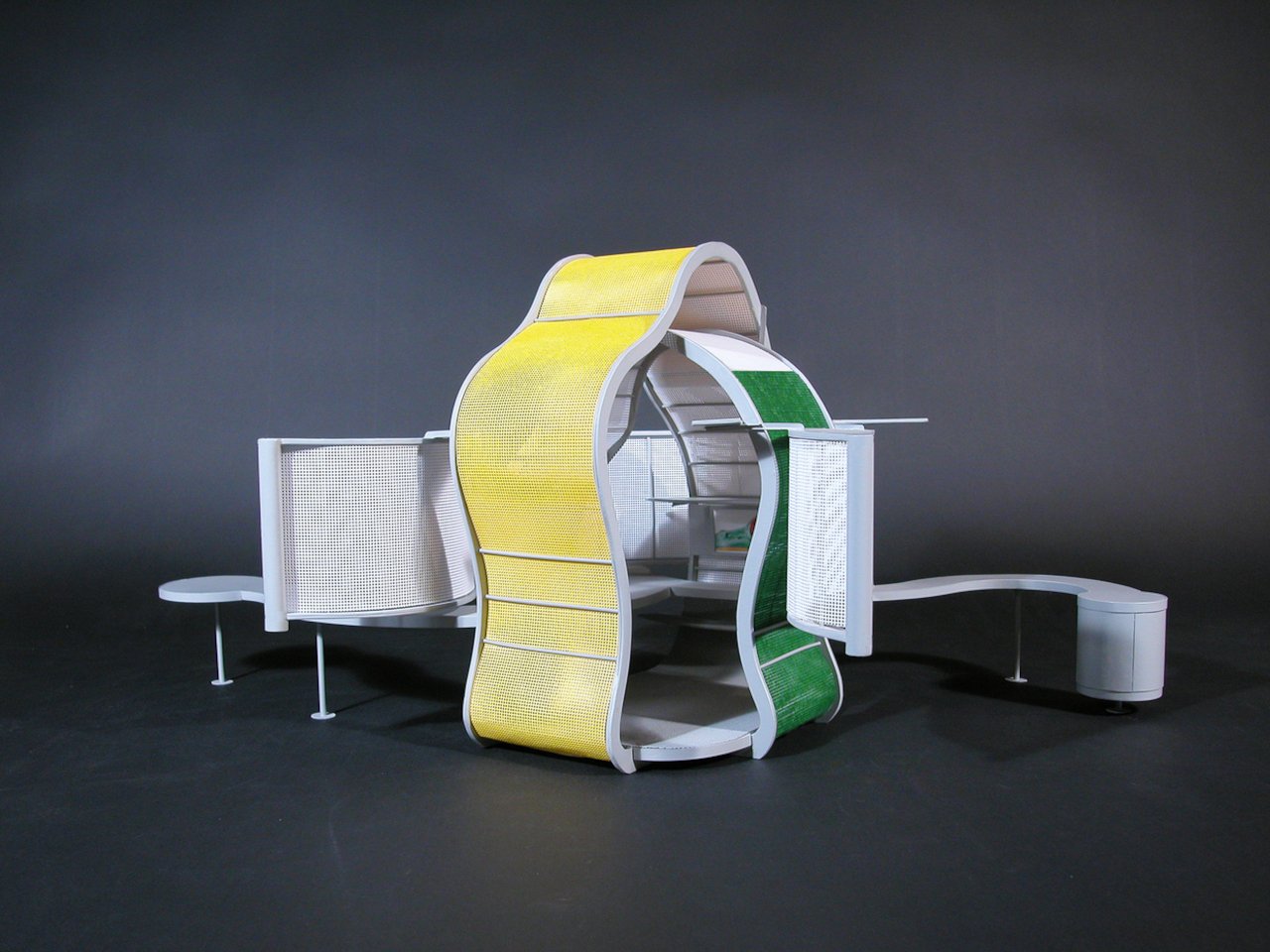Traditional office cubicles represent everything wrong with modern workplace design. Boxy, gray, and built purely for efficiency, these spaces do nothing to inspire creativity or support well-being. Most workers spend eight hours a day surrounded by walls that feel more like barriers than boundaries, creating environments that drain energy rather than nurture it.
Michael Jantzen’s Chameleon Workplace concept flips this script entirely by offering a sculptural, color-shifting alternative that feels more like a personal retreat than a corporate cage. The design challenges every assumption about what workplace furniture should look like, replacing rigid rectangles with flowing curves and static surfaces with dynamic, adaptable elements that respond to user needs.
Designer: Michael Jantzen
The structure uses three interlocking, curved wooden frames woven together to create a partially enclosed, cocoon-like volume. These eco-friendly frames form the skeleton of the workspace, defining boundaries while maintaining visual and physical permeability. The organic shapes create a sense of privacy without the claustrophobic feeling of traditional cubicles, making the space feel protective rather than confining.
What makes the concept genuinely innovative is the fabric system woven through the frames. Rolls of eco-friendly fabric in white, yellow, and green are stored inside metal cylinders at the ends of each frame. Small electric motors pull these fabrics through the wooden structure like strips of film, allowing users to change the color, texture, and opacity of their workspace instantly.
Users control the transformation with a simple button press, shifting the environment from all white for focused work to all yellow for energizing tasks to all green for calming moments. The fabrics can also be mixed in any combination, creating gradient effects or patterns that reflect personal preferences or time of day. This dynamic adaptability turns the workspace into a tool for mood regulation.
The perforated, semi-transparent fabric allows light to filter through even when the enclosure feels most private. This balance between openness and seclusion addresses one of the biggest challenges in office design, giving workers control over their level of exposure and interaction with the surrounding environment without requiring permanent walls or barriers.
Curved work surfaces, integrated shelves, and a storage cabinet flow through the partially enclosed volume, with some elements extending outward for exterior use. This inside-outside relationship supports both solo focus work and collaborative activities, making the workspace flexible enough to adapt throughout the day as tasks and social needs change.
The entire system is designed as a modular kit, allowing the size and shape to be modified for different users, teams, or office layouts. This adaptability means the Chameleon Workplace can evolve with changing organizational needs rather than becoming obsolete when workflows shift or companies reorganize their spaces.
The Chameleon Workplace represents a bold vision for office design that treats workspaces as living, breathing environments rather than static fixtures. By blending organic forms, adaptive color, and modular thinking with sustainable materials, it imagines a future where our work environments are as dynamic and creative as the people who inhabit them.
The post Chameleon Workplace: Cubicle Concept That Changes Color on Demand first appeared on Yanko Design.

